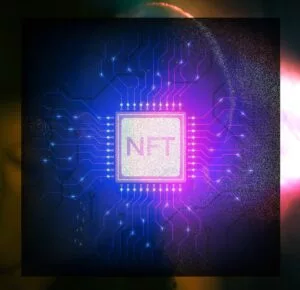
What are NFTs, How do They Work, and How to Buy?
In 2014, the first NFT (non-fungible token) was created by Kevin McCoy and Anil Dash. It sold for $4 dollars. Since this humble beginning, NFTs slowly gained a fanbase. Then, in 2021, NFTs exploded in popularity. It seemed like people could not get enough of these unique crypto tokens. Artist all over the world were creating and selling NFTs, some for millions of dollars. Even more affordable NFTs sold for thousands of dollars. This sudden growth in NFT interest was due in part to several high-profile sales and auctions. NFTs became so popular that shows like Saturday Night Live and South Park parodied them.
While no one is certain on its longevity, the NFT phenomena is expected to continue for 2023. More people will jump on the bandwagon, and the value of NFTs will skyrocket. If you are looking to get into the NFT market, then this article is for you. We will explain how you can buy an NFT. We will also look at what NFTs, how they are used, and answer some common questions.
What are NFTs
NFTs stand for non-fungible tokens. They are digital asset represented by a digital object like a video, GIF, painting, or photo. NFTs also come in unusual forms. Twitter CEO Jack Dorsey created an NFT out of the very first tweet, which sold for over $2.9 million.
NFTs share similarities with cryptocurrencies. They are both digital tokens that hold a monetary value. Both are stored on the blockchain (a digital ledger), and you can buy them at online exchanges. Specifically, NFTs are mostly stored on the Ethereum blockchain (Ethereum is a cryptocurrency).
However, NFTs and cryptocurrencies are separated by a key difference. Cryptocurrencies are fungible tokens, meaning they hold the same value. For example, one Bitcoin is worth the same as one Bitcoin; this will never change. Another way to think of it is one dollar will always equal one dollar.
NFTs are non-fungible, which means they differ in value. Therefore, each NFT has its own unique value attached to it; it cannot be replaced with something else. You can have two NFTs that look exactly the same, but they will differ in how much they are worth.
How NFTs are used
Many artists use NFTS to sell their digital artwork. It functions as an online art gallery or auction. NFTs are popular among artists because they can sell their work directly to customers. That way, they keep more of the profit; there is no third party facilitating the transaction and charging a high fee. Artists can also program a royalty’s function into their NFT art. That way, they will get a percentage of the profits whenever the art is sold to a new owner.
On the consumer side, some people treat NFTs as collectible items. Cryptokitties is a famous example of NFT collecting. These NFTs are digital representations of cats, each one with their unique characteristics and price. Since debuting in 2017, fans have spent around $20 million on collecting cryptokitties. Another popular collectible NFT is NBA Top Shot. This NFT marketplace sells famous NBA moments tokenized in digital card form. Prices for these cards range from $1 up to $12,000.
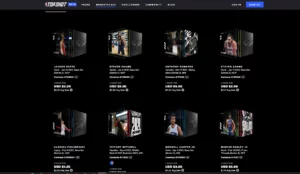
Some of the NFTs listed on NBA Top Shot.
NFTs have also been used to fund charity events. For example, corporations like Microsoft or Apple can use NFT themed art to raise funds for charities.
How to buy NFTs
The first step in buying NFTs is setting up a wallet to store them. This wallet can either be a digital wallet (known as hot storage) or a physical hardware wallet (known as cold storage). Cold storage wallets are the recommended version since they are more stable and provide better security. With hot storage wallets, there is a much higher risk of losing your NFTs to hackers or system crashes.
After you have secured your NFT wallet, your next step is to determine how you will pay. Some NFTs can only be bought with Ethereum. Therefore, you will have to purchase some of this cryptocurrency from one of the cryptocurrency exchanges. However, some sites allow you to buy NFTs with a debit or credit card.
Once you have your funds at the ready, you can choose where you want to buy your NFTs. There are several NFT exchanges that sell these tokens. Some popular exchanges include OpenSea, Rarible, and SuperRare. After you have selected an NFT marketplace, you can start scrolling through the featured art until you find one that you like.
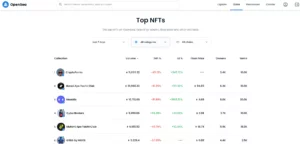
The top NFTs listed on OpenSea.
Typically, NFTs are sold either through a fixed price or a timed auction. A fixed price NFT has a set price that does not fall or rise, and you can buy it with either Ethereum or traditional money. Timed auctions require you to place a bid within a set timeframe. When the time limit ends, the user with the highest bid receives the NFT. Keep in mind that NFT marketplaces will charge a transaction fee in order for the purchase to happen. OpenSea charges a “gas” fee for NFT transactions; the price of this fee depends on how busy the network gets. Rarible has a fixed fee of 2.5% for both seller and buyer.
The final step is to transfer your NFT to your crypto wallet. We recommend you keep your NFT(s) in your crypto wallet until you want to sell or trade them.
Frequently asked questions about NFTs
Why are NFTs popular?
One of the reasons NFTs are so popular is the fact that each one has their own unique qualities. This makes them popular collectible items since no two NFTs are the same. NFTs are popular with artists and other content creators because it lets them sell their work directly to consumer without the need of a third party. This method lets the creator keep more of the profits. Celebrity endorsements for NFTS have also helped it popularity grow. Famous individuals like Snoop Dog and Paris Hilton have created their own NFTs, which has fueled the growth of the NFT fanbase.
Are NFTs a good investment?
There is some uncertainty on whether NFTs make a good investment. According to Forbes, investing in NFTs can be a risky venture. Since they are relatively new, there is no history to judge the performance of NFTs’ price. Their future is also uncertain; will the NFT craze fade away over the next few years?
The value of an NFT depends on what others are willing to pay for it. That means that the demand for NFTs will drive the price rather than traditional factors that affect stock prices.
So in the end, investing in NFTs is a personal decision. If you have the money available and are aware of the potential risks involved, then you can invest in an NFT.
Are NFTs safe?
For the most part NFTs are safe. However, there are some security risks to know. Some artists have had their artwork stolen by imposters who then sell their work without permission. To combat these thefts, NFT exchanges have set up verification process. However, they vary in their stringency. Scammers also set up fake NFT marketplaces to steal money from consumers. Therefore, we recommend you stick with verified NFT exchanges like the ones mentioned in this guide.
Overall, you should research the different exchanges, prices and sellers of NFTs before buying. That way, there is less likelihood of you falling victim to a scam.
How to create and sell an NFT?
NFTs are created through a process called minting: turning a digital item into an asset that is stored on the blockchain. The process is similar to minting a coin and adding it into circulation. Here are the steps:
- Choose the item you want to turn into an NFT: As we have seen earlier, NFTs can be a photo, GIF, video, or even a tweet.
- Select the blockchain you want to use for your NFT: The most commonly used blockchain for NFTs is Ethereum. However, other blockchains like Polkadot, Tezos, and Binance Smart Chain are used.
- Set up your crypto wallet: Since you will need some cryptocurrency to create your NFT, you will need to get a crypto wallet. As we mentioned earlier you can choose between a digital or hardware wallet, although hardware wallets are the recommended choice. After you have set up your wallet, you should buy come cryptocurrency. Since most NFT marketplaces only accept Ethereum, this is the cryptocurrency to get.
- Pick an NFT Market Place: Now that you have a crypto wallet and some cryptocurrency, you can select an NFT marketplace to create and sell your NFT(s). Before you make your selection, it is a good idea to research the various marketplaces to see which one works best for you and you NFT(s). Also, some NFT marketplaces have their own required cryptocurrencies. For example, Rarible has a self-titled cryptocurrency. Once you have selected an NFT marketplace, connect your account to your crypto wallet. This will let you pay the fees the exchange charges to mint your NFT.
- Upload your NFT: Uploading your NFT to a NFT marketplace will complete the minting process. It will turn your digital file into a sellable NFT. As noted in the previous step, the NFT marketplace will charge a small fee for minting your digital file.
Once your NFT is minted, you can choose how you want to monetize it. You can set a fixed price for the NFT, or sell it during a timed auction. Some marketplaces allow unlimited auctions, where you decide when to end the bidding.
What are the most expensive NFTs?
As of December 2021, the most expensive NFT in history is The Merge by the artist Pak. The Merge was bought by 28,983 collectors for a grand total of $91.8 million. NFTs from established artists like Beeple and CryptoPunk can sell between $6 million and $60 million.
Can NFTs be eco-friendly?
NFTs and crypto currencies have faced criticism for their impact on the environment. Cryptocurrencies like Bitcoin consume 129.24 TWh (terawatts per hours) of electricity per year. That’s roughly a quarter of the electricity used in Canada. NFTS also consume a high amount of electricity. This is due to NFT transactions being stored on the Ethereum blockchain, which also consume large amounts of energy. Also, the energy used in placing bids or reselling the NFT can add up. According to Investopedia, an NFT transaction uses over 260 kilowatt hours (KWh) of electricity. That is equivalent to the electricity usage of a U.S. household over nine days.
As you van see, NFTs are not eco-friendly. However, more energy efficient technology is being explored and tested which will hopefully lower NFTs’ caron footprint. Ethereum’s developers are planning a new energy efficient security feature called proof-of-stake. This feature uses less computing power; however, it is still under development. A website called Cryptoart.WTF lists the rough estimates of energy use and emissions produced by NFTs. The website intends to hold NFT marketplaces accountable for their energy usage and encourage them to use more efficient technology. The site also has a spreadsheet that lists eco conscious NFT creators and marketplaces.
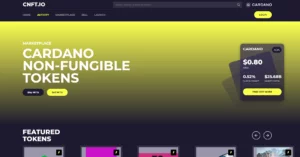
Cardano is an environmentally friendly NFT marketplace.
There are other steps NFT creator and marketplaces can take to lower their carbon emissions. Some examples include:
- Using renewable energy, like solar power or wind and hydro electricity.
- Buying Carbon Offsets. These are credits that can be used as a counterweight to carbon emissions. One Offset credit is equal to one metric ton of Carbon Dioxide. Buying Carbon Offsets absorbs or prevents the release of carbon into the environment.
Are NFTs illegal?
NFTs themselves are not illegal; the selling and buying of NFTs is allowed in Canada. However, NFTs do face some legal issues, one of which is plagiarism. There have been several instances of artists having their work turned into an NFT and sold by others without permission. Sometimes, people will impersonate an artist and sell their NFTs. To combat plagiarism, the art website DevianArt created a bot that searches and compares user art to art on NFT marketplaces. If the bot determines the art is similar, it issues a warning to the user to take down their art. Some NFT marketplaces have rules and regulations against plagiarism. However, some artists feel that marketplaces are slow to respond to plagiarism.
While NFTs are not currently regulated, this may change in the near future. Some governments and financial institutions are concerned that NFTs could be used for Pyramid/Ponzi schemes, money laundering, and other criminal activities. This fear may result in regulations for NFTs. If regulations do come into effect, then the way NFTs are transacted will be severely impacted; for example, they will have to meet certain guidelines.
Read more

Joint and Separate Bank Accounts For Young Couples
Having trouble picking between a joint or separate bank account? If so, then this guide is for you.
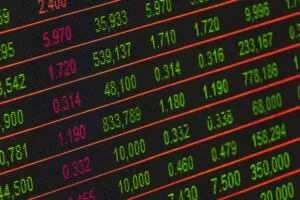
The Best Robo Advisors in Canada
Take your investments up to the next level with robo advisors. An easy way to know which stocks to buy for the best return.
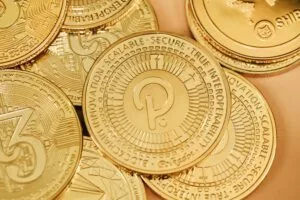
How to Buy Polkadot in Canada
Learn how to buy the new and unique cryptocurrency Polkadot.
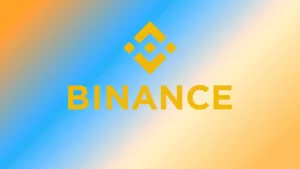
Binance Review: Features, Trading, Pros and Cons
If you ever wanted to learn more about Binance, then this article is for you.